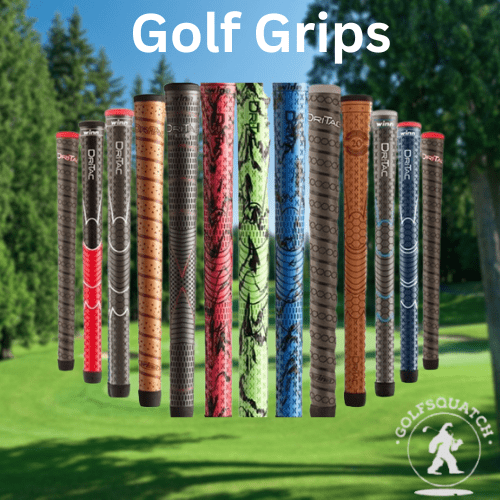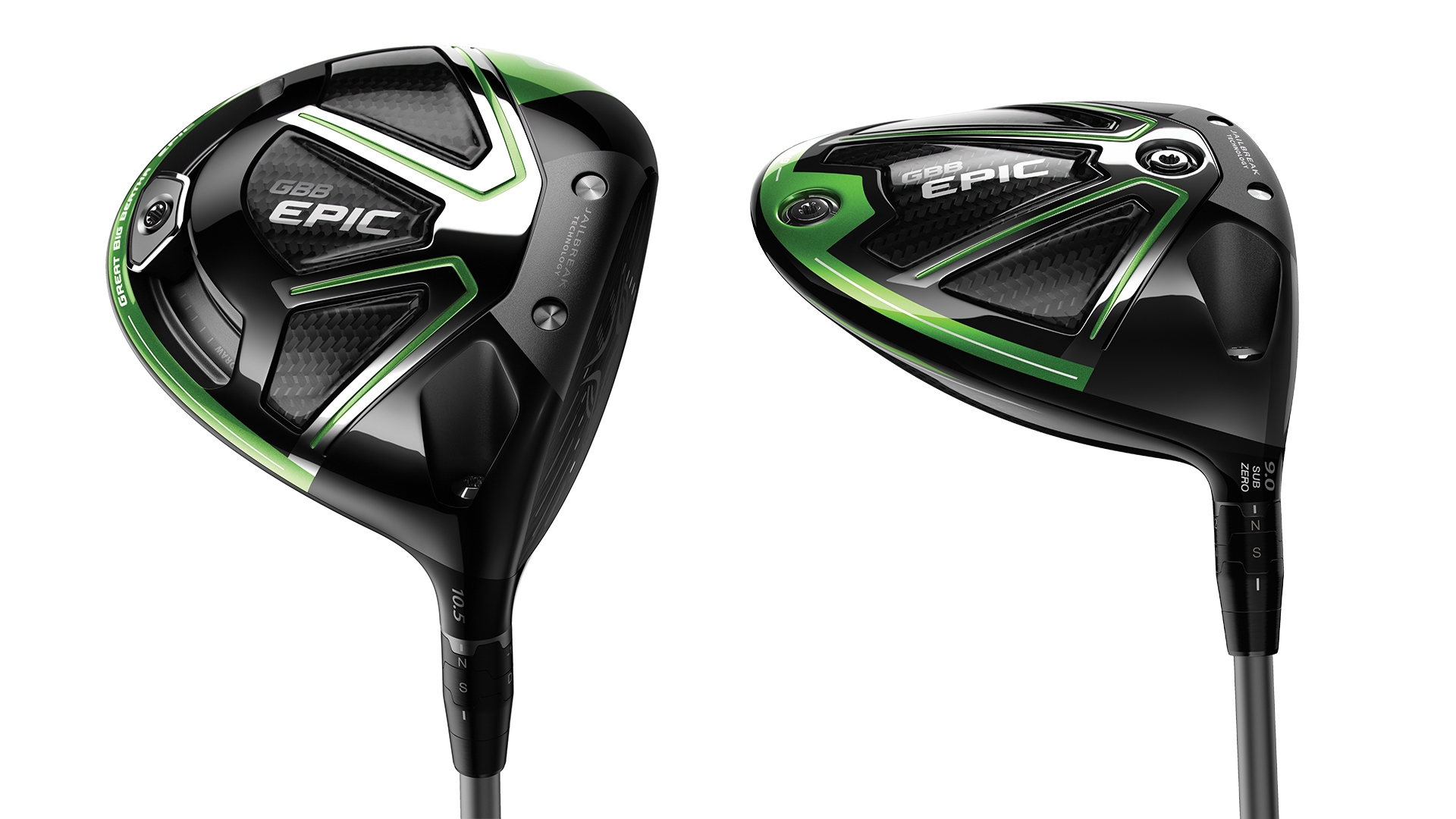Are you contemplating playing golf? If you are, the one thing you have to remember throughout the game is: grip is the most crucial factor when it comes to golf and your golf grips may impact this important part of the golf swing.
Proper Golf Grips and Your Grip
A good grip and proper grips binds you with the golf club, one key to making better contact with the golf ball. In this article, we’re going to discuss the 9 simple steps to a better grip.
If you’d like, you can learn how to regrip a golf club
What Are the Basics to Your Golf Grips?
The grip is how you place your hands on the golf club to allow a good stroke. When you place your hands on the golf club appropriately, you’re able to manage the position of the clubface on strike. Remember, during the swing, your body and the golf club must rotate at the same speed. Why is the grip Important?
Importance of the Correct Golf Grips
The correct golf grip is important because it allows you better rotation on your wrists and better power when it comes to moving the golf club. To position yourself correctly, you’ll need to stand in front of the ball and have your hands and arms relaxed. This comes in handy to ensure that you hold the golf club using your fingers.
Further, it facilitates motion and fluidity during the swing. It’s worth noting that when you approach the ball in a tense mood, you’ll hold the golf club in your palms which hinders movement during the swing. If your grip lacks pressure, you’ll not make strong strokes and this will result in loss of precision during the stroke. With the right pressure, you enhance precision and strength in your strokes.
Do Your Golf Clubs Need Re-Gripping?
If you’re a seasoned golfer, you understand that the only part of the golf club you touch is the grip. While many golfers may overlook their golf grips, replacing these parts at least each season allows you to hold your club with minimal grip pressure with is critical when it comes to swinging the club appropriately and with maximum acceleration, something you can’t achieve if your golf club grips are slippery, hard, or glazed.
How will Worn out Grips Affect Your Performance?
Many things can go wrong if you use worn-out golf grips such as slippage. Slippage will result in off-center strikes which eventually cause poor scoring. Remember, worn-out golf grips won’t offer adequate traction which means that you’ll have to tightly squeeze the club if you’re to maintain control.
With time, worn-out golf grips will become harder and this will have an impact on the way the grip responds to change and this will also affect the level of comfort. Acquiring new golf grips will not only enhance performance, but they’ll also make you a more confident player.
What are the Advantages of having a new set of Golf Grips?
There are numerous benefits to getting a new set of golf grips. These include enhanced traction, better performance, a better hold wild especially during wet weather, reduced tension in the hands which eventually gives you smoother swings, and enhanced comfort. With all these benefits, golf players are guaranteed lower scores and an exciting moment of golf. How do you know when it’s time to get new golf grips?
You can do so by simply looking at the grip. Evaluate it to determine whether or not it has a glazed or shiny appearance. Can you see any visible signs of wear and tear spots? If the material feels hard or appears split or even cracked with a worn-out cap, chances are you need to replace it.
How many Golf Rounds have you Completed with the Club?
Experts say that you should replace your golf grips after every 40 golf rounds. You may also want to replace them annually. One thing you need to beware of is; your grip may look fine when in the real sense it’s worn out.
How important is the Grip Size?
The size of your grip plays a huge role when it comes to executing good quality shots. To figure out the right size that works for you, you want to try different sizes. Standard size grips are commonly used by many golfers. Still, many players prefer using midsize, undersize, or jumbo size grips. When it comes to size, what matters is what’s comfortable for you as an individual. Many of the golf club grip manufacturers today produce different sizes which can fit all golfers regardless of the size of their hands.
Does the Grip Material Affect the Performance of the Golf Grips?
Golf grips are made from a wide range of materials. Remember, the material you choose will have an impact on the grip performance. Many manufacturers use a range of materials to give their golf grips unique characteristics as well as enhance playing benefits.
Some manufacturers today have adopted the hybrid grip technology where they combine superior performance rubber and fusing cord for the ultimate traction and feel as well as moisture control. With technology evolving fast, many manufacturers are focusing on material innovation to produce great performance golf grips.
Various Ways to Grip the Golf Club in Detail
There are three main strategies you can use to grip the golf club. Remember, your hands must work in collaboration to give you enough power to strike the ball.
The three golf grips are:
Interlocking grip
The interlocking grip is how the pinky finger locks between the middle left-hand fingers and the index finger. Many golf experts use the interlocking grip which is recommended for people who have short fingers and tiny hands. Players who have no sufficient forearm strength and novice players can also utilize this style.
Overlapping golf grips, Vardon overlap, or Vardon grip
The overlapping grip is the most commonly used method by many popular players. This grip was made popular by Harry Vardon sometime during the 20th century. The overlapping or Vardon grip puts the golf club in the fingers. If you’re taking golf lessons, your instructor will most likely be using the overlapping grip. To execute this grip, you need to place the little finger from the trailing hand between the middle and index finger on the lead hand. If you’re a right-handed golfer, your left hand is the lead hand. The thumb from your lead hand needs to fit on the trailing hand’s lifeline.
Ten finger golf grips which is also known as overlapping grip
The ten-finger grip is also known as the Baseball grip. Golf instructors are reluctant to use this method, even though it comes with various advantages. Some expert golfers are known to have used this style with some instructors suggesting this grip for beginners seeing that it makes early golf learning simple. If you suffer from arthritis, joint pain, or have small hands, this style will work best for you. To get in the right position for this grip, you want to begin with the ideal lead handgrip, proceed to place the little finger of your trailing hand against the lead hand’s index finger, and cover the thumb of your lead hand with the trailing hand’s lifeline.
How to Properly Grip a Golf Club
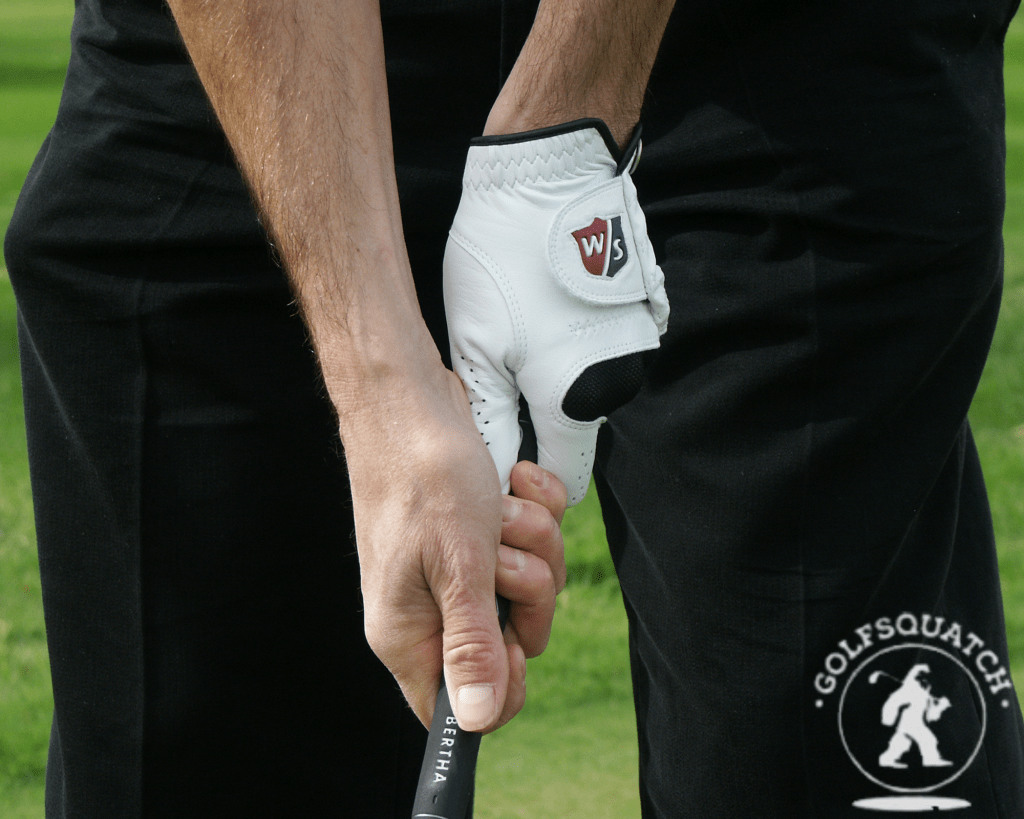
As we’ve seen above, a good and consistent grip is critical if you want to get lower scores and enjoy your playing. This is the reason why many golf instructors begin by ensuring that their students have fully mastered the golf stance and grip and are well versed withholding their putter, irons, and drivers before proceeding to the next step. The following steps should help you understand how to get a better grip.
1. Assess Your Current Golf Grips
As a beginner, you’ll need to assess your proper golf grips and understand that they will be imperfect until you learn and master the art. Mastering your grip will be critical in laying the foundation for your golf game. We have already discussed the main types of golf grips and what remains now is establishing whether or not you’re getting the best golf grip for accuracy. Here are grip tips that will be instrumental in helping you assess and improve your golf club grips.
You want to begin by selecting your most preferred grip type. Proceed to allow the V shape that your lead hand forms show you the correct direction.
- Establishing a Weak Golf Grips – While you’re gripping the club with your top hand in front of you, check below to see the position of the V shape. If the V shape is directly pointing at the center of your body and you’re only able to see one or no knuckles, your grip is weak.
- Establishing a Neutral Golf Grips – In a neutral grip, the V shape will be pointing somehow towards the left side to display two knuckles only.
- Establishing a Strong Golf Grips – You’ll know that you have a strong and proper golf grip left hand if you can see three knuckles on the top hand. In this case, the V shape will be pointing towards the chest and this coordinates with the dominance of your hand. This is simple terms means that if you’re right-handed, the V will point to the right side of your chest and vice versa.
- What happens when your golf grips is too weak or overly strong? – Different golf grips will produce different results for you on the golf course. To get the ideal grip, you need to keep on practicing until you can see your two knuckles with a V shape that’s somehow off-center regarding the club shaft. Many golf instructors agree that a slightly strong grip is good.However, they say that golf players should try to avoid weak golf grips as much as they can. Regardless of your preferred grip style, ensure that you apply the ideal hand position and strength if you want to get the most out of your shots. Watching some proper golf grips YouTube videos will help you enhance your skills and improve your performance.
2. Golf Grips Size
Another problem with not having the proper golf grips is having the wrong grip size will harm your performance. One way of determining your grip size is by gripping the club using your glove hand. Check whether the tips of your fingers are correlative with your palm.
You’ll know it’s the correct size if they are slightly touching one another. Your golf grips will be too thin if your fingers are deep within your palm and if they are not touching whatsoever, this means the golf grips are extremely thick. The wrong size will stop you from delivering the club appropriately on impact.
3. Hand Positioning
Many novice golfers hold the golf club far above the wrong grip. This makes it hard for them to control their movement and eventually results in shots emanating from the club’s heel. Ensure there’s at least an inch between the end of the club and your grip. Many golf grips come with a mark which shows where your golf grips right thumb should be. Here are more golf grip instructions.
- Golf Grips Left Hand – Your left thumb in this grip should be pointing towards the shaft’s right-hand side. Proceed to grip the club with your right hand. With your right thumb on top of the left thumb, ensure that your right thumb settles on the club’s left side facing downwards.
- Golf Grips Both Hands – As a beginner, you’ll struggle with your hand positioning until you can master the art. However, the last thing you want to do is panic. You can find specially designed golf grips which can come in handy. These are designed to let you know where your fingers, hands, and thumbs need to be positioned.
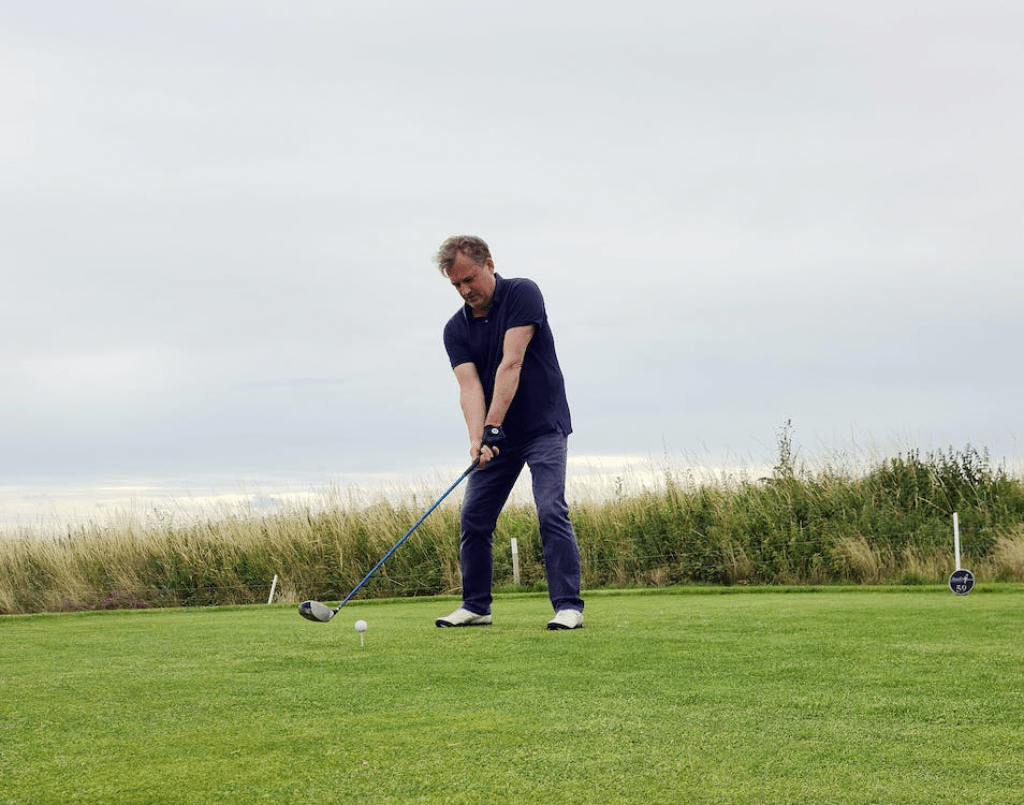
4. Have a Marker Pen
One thing to remember to have the correct golf grips is a marker pen will come in handy to help you define the position of your club if you don’t feel confident about the current position on your left hand. Go ahead and identify the correct angles on your gloves and draw a line. This will help you remember where the club should be positioned.
With time, you’ll be able to identify the position without needing the marker. You don’t have to be afraid that you’re breaking any professional golf rules by marking your gloves. Doing so is legal if it’ll help you master your grip. Just the same way marking your golf ball will come in handy to assist you to launch your putts on line, marking the gloves will help you get the confidence that you’re gripping the club appropriately whenever you swing it.
5. Interlocking vs. Overlapping Golf Grips
Many golfers can’t decide whether or not they should collaborate their hands and fingers. Some golfers choose to while others are opposed to the idea. One thing to have proper golf grips is coordinating hands together is fast becoming a popular practice among many golf players. This is attributed to the fact that correlating fingers offers a more solid and enhanced wrist hinge grip.
The Vardon grip, also known as the overlapping grip is the most commonly used finger linking method. Here, a golfer’s hands are connected by the position of the right pinky finger which is placed in between the left hand’s middle and index finger. Eventually, a golfer will want to position their left hand’s thumb with their right hand’s middle palm.
6. Pressure
If you hold your golf club too tightly, you could experience tension in your forearms and this will hinder you from achieving a full shoulder turn. All standard golfers will experience this at some point especially when under pressure. Try to hold the club gently and remember to quiver the club at address. This will help eliminate tension.
Holding the club too tightly will not only give you inconsistent strikes, but it’ll also result in loss of club control. How do you know that you’re holding the club too tightly? As you address the ball you’ll get a tense feeling in your forearms. Grip the club in a soft yet firm manner and maintain relaxed arms. You may want to slightly waggle the club as this often helps you release tension in your arms and wrists.
7. Adopt a Neutral Golf Grips
One of the most natural and common ways of holding the golf club is with a neutral grip. You may want to start by learning this method before you can master the skills and gain more confidence. Remember, the more you practice, the more you improve your playing skills. The magnitude of your proper golf grip left-hand rotation will depend on the sturdiness of the grip. As we’ve mentioned above, if you’re seeing two knuckles on the left hand that means the grip is strong and capable of closing the clubface on strike. If you turn your left hand anti-clockwise to hide the knuckles that makes it a soft grip and this opens the clubface up.
8. Try Alternative Golf Grips
While we’ve mentioned the approved and some of the commonly used methods of gripping the golf club, no written rule says you can’t try other methods. Remember, everybody perceives things differently and some golfers won’t be comfortable using the same gripping style over and over. You are allowed to try any other method that makes you feel comfortable and natural as long as it gives you the desired results. Of course, you don’t expect everybody to grip the club as has been explained here.
- Jordan Spieth – It’s worth noting that some of the most accomplished golfers have alternative gripping methods. For instance: Jordan Spieth, has a unique way of holding the club which no other professional has managed. This is a classic example to show that there’s no right or wrong golf club gripping method. All you need is to know where the clubface is and be in a position to hit the ball and send it towards the hole.
9. Adopt the Modern Golf Grips
Many professionals have used the modern golf grip for years. This method can be termed as one of the standard styles when it comes to the recommended hand position. You want to ensure that both hands are well positioned to allow them to insert pressure on the club from a position which is close to the center. This allows the wrists to provide the appropriate amount of pressure while the clubface gets a better opportunity to settle squarely on the arc during the swing. Eventually, the clubface hits the golf ball with the less side spin, enabling you to consistently transfer more energy at impact.
Go here to read more on the basics of the golf grip
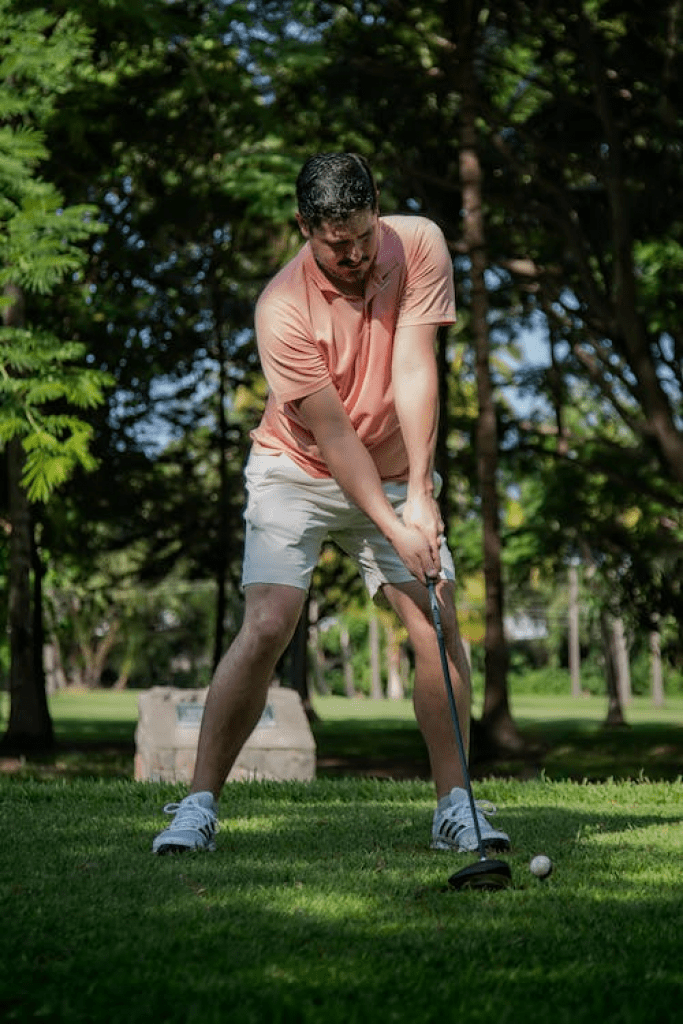
Choosing the Right Golf Clubs
Whether you’re a seasoned golfer or are a novice, having the right golf club is critical. With the right club, you can easily change your ability to play on the golf course. What’s more, you’ll also cut down your handicap. If you’re buying golf clubs for the first time, here are tips to help you the right choice.
Don’t be in a Hurry
Today, there are numerous golf clubs in the market such that finding one that meets your standards becomes a challenge not only for novice players but also for seasoned players too. The golf club you choose will depend on your set budget as well as your playing ability.
Remember, purchasing a new golf club can be a huge investment and you want to conduct sufficient research before making any concrete decision.
Don’t Focus on the Brand
If you’re a fan of international events, you’ll think that purchasing a certain brand of golf clubs will have an impact on your ability to have correct golf grips and score as you’ve seen your favorite professionals do. Of course, there’s nothing wrong with wanting good quality products.
However, you want to be flexible enough to try other brands and get a feel of the diverse brands. Just as any other industry today, the golf club continues to advance as technology evolves. The only way to discover new designs and technology is by purchasing hardly known brands. Often, they come with advanced technology which you can leverage to improve your playing skills.
Consider the Golf Grips Thickness
The grip thickness can highly influence the impact of your swing. A thin rip will give golfers huge hand actions and this can proceed to the swing. If the grip is too thick on the other hand, your hands will be restricted and this will have a negative impact.
How does a Great Golf Club look like?
With a proper grip, you can easily hold the golf club with your left-hand ring and middle fingers. If your finger doesn’t get into contact with your thumb while you’re holding the club, this is an indication that the rip is extremely big.
The Shaft
Shaft is another important factor to have proper golf grips, you should get the right length depending on your body type, height, and physical strength. The rule of thumb, in this case, states that tall players require a longer shaft to maximize their playing. Another thing you need to factor in is the shaft flex and how appropriate it is to your swing.
If you choose a shaft that’s too stiff, chances are high that you’ll struggle with the loss of distance and low ball flight. If your shaft is too soft on the other hand, you’ll struggle with ballooning which will result in a loss in distance. How then can you determine the correctness of the shaft flex? If you notice that your ball is taking the left direction on impact, your shaft is too soft. If it flies to the left, your shaft is too stiff.
Loft
The loft or loft angle is the edge that a line traversing across the shaft’s center and the club’s face forms. It’s measured in degrees. If a golf club has a low loft, it will hit the ball further compared to a club that has a high loft. On the other hand, a club with a higher loft will hit the ball u in a descending manner on a steep angle.
You can check the status of the left by assessing the section of the club’s face that’s angled upwards, as well as checking the section of the face that’s directed further away from the shaft. If a clubface has a low level of loft, it’ll seem to be more vertically angled compared to one with a high level of the loft.
The Club Head
Get varied club head sizes to maximize your golf experience. Many of the available sizes include midsize, standard, and oversized heads. The size you choose depends on how experienced you are. In general, the bigger the club head the better your swing will be. Still, you can achieve a good result from a poor hit especially when you’re using an oversized head. One important factor to remember when it comes to oversized club heads is: controlling them can be a difficult task.
Essential Golf Clubs for Novice Players
Starting you on a new sport can be exciting and you’ll want to buy the best gear there is in the market. If you’re a beginner, however, you’ll need to be cautious before you proceed to buy your golf gear. To get the best golf gear, you need to take time as we’ve already mentioned above. Desist from purchasing advanced golf clubs before you’re experienced enough in the sport.
Where possible, beginners can start their journey by first watching a proper grip golf video just to get a glimpse of what to expect. From there, experts say that borrowing a set of golf clubs would be ideal. If you can’t borrow, then purchasing second-hand pieces is better than investing in new ones before you’re sure about what you want.
Understand the Game and Clubs First
It takes familiarity with the game and the clubs to gauge your expectations and single out your preferred clubs. You want to forego top brands at this point. Your beginner set should include 3-wood and a driver, a putter, and odd-numbered irons that is 9,7,5, and 3.
In addition to choosing between correct golf grip right hand and left and women’s and men’s clubs, you may want to choose between graphite or steel shaft clubs. As a beginner, steel shafts are ideal because they’re less expensive and more durable.
Essential Golf Clubs for Slightly Experienced & Seasoned Golfers
If you already have more than one year of experience, you want to proceed to the next step of the sport by having a collection of clubs customized to meet your ability and physical features. Slightly Experienced players, for instance, need to start getting more club heads as they build their experience and enhance their performance. Experienced players can purchase golf clubs from some of the top brands and models. At this point, many of them are aware of their weaknesses and strengths and can leverage that to choose the clubs that work best for them.
Seasoned Golfers
Experienced players may also consider personalized fitting which involves customizing the club flex, shaft length, loft, and club head lie to fit their specifications. These steps are a great investment for you if you’re considering playing golf for the long term.
Type of Golf Grips Clubs
Let’s check out the various types of golf clubs you can choose from.
Driver
This golf club is utilized off the tee on long holes. The driver helps you hit the ball as far as possible. The driver is measured in cubic centimeters and the biggest recommended driver head is 460cc. Many drivers are made using carbon composite or titanium because the materials are lighter compared to steel.
This allows the manufacturers to increase the head size without making the club too heavy. If you plan to buy second hand or drivers produced before January 2008, you want to make sure that they are still valid for use in club competitions. Currently, the maximum authorized coefficient of restitution is 0.83. What this means is that when you hit the golf ball at a 1mph clubface, the rebound will be 83mph. In cases where the rebound is higher than that, the driver is said to be illegitimate.
Woods
If you’re contemplating purchasing a woods golf club, you need to first figure out why you perhaps you want to hit par 5’s in your next game. These tips should come in handy to ease the process of picking the ideal club.
Remember:
When a golf club comes with a higher number, it’ll often have a short club shaft length
If the golf club number is higher, the loft will be higher
When it comes to shafts, steel woods help you to gain a low and more accurate ball flight while graphite woods are more popular because they propel the ball further
In terms of design, manufacturers provide various choices to choose from. They include: draw, offset, and neutral designs. Further, the weight has been accumulated inside the clubhead and this comes in handy to keep the club square on impact.
Wedge
The wedge golf club is ideal if you’re looking to improve your scores. Having the right wedge is critical if you want to enhance your entire game. The wedge loft comprises of:
- Pitching wedge. With a 46 and 50 degrees loft, the pitching wedge comes in handy to execute shots of approximately 12 yards into the hole.
- The sand wedge is usually used for bunker play and comes with a 54 to 58 degrees loft.
- Gap or Approach Wedge is more lofted compared to the pitching wedge. It comes with a 50 to 55-degree loft.
- Lob wedge comes with a 6 to 64-degree wedge and is perfect for achieving high flights from short distances.
Other golf grips club types include:
Final Thoughts About Golf Grips
With these 9 simple steps, you should be able to improve your better grip and enhance your performance. Remember, you’ll need consistent practice if you’re to master the sport within a short period. You also need the right clubs to be able to play effectively.

